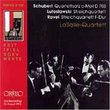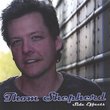| All Artists: Ludwig van Beethoven, Kurt Masur, New York Philharmonic Title: Beethoven: Violin Concerto, Romances Members Wishing: 0 Total Copies: 0 Label: Deutsche Grammophon Original Release Date: 1/1/2002 Re-Release Date: 10/8/2002 Album Type: Live Genre: Classical Styles: Forms & Genres, Concertos, Historical Periods, Classical (c.1770-1830), Modern, 20th, & 21st Century, Instruments, Strings, Symphonies Number of Discs: 1 SwapaCD Credits: 1 UPC: 028947134923 |
Search - Ludwig van Beethoven, Kurt Masur, New York Philharmonic :: Beethoven: Violin Concerto, Romances
 | Ludwig van Beethoven, Kurt Masur, New York Philharmonic Beethoven: Violin Concerto, Romances Genre: Classical
No Description Available. Genre: Classical Music Media Format: Compact Disk Rating: Release Date: 8-OCT-2002 |
Larger Image |
CD DetailsSynopsis
Product Description No Description Available. Genre: Classical Music Media Format: Compact Disk Rating: Release Date: 8-OCT-2002 Similar CDs
|
CD ReviewsComparing the Two Beethoven Recordings by Mutter Ming-Yeung Lu | San Francisco Bay Area, CA USA | 03/12/2003 (3 out of 5 stars) "I first became an admirer of Anne Sophie Mutter with her first recording of the Beethoven Violin Concerto--done when she was 16, with von Karajan and the Berlin Philharmonic--so it is with both excitement and trepidation that I put the CD of this new recording on. Trepidation because for a few years now, Mutter's playing has become very affected. While to the artist herself this "more dramatic" style reflects her newly found freedom and spontaneity in musical expression, to some of her listeners the rubato and quirky phrasings just strike our ears as mannerisms. A first listening calmed my fears somewhat. There are a few stunningly beautiful passages that show Mutter's ability to create sounds that cut into your soul. But the mannerisms are there. Rubato occurs all too often, to the point that this listener feels a little "out-of-breath" when towed along by her erratic tempos. Notes are unexpectedly stressed. Sharp contrasts are also found in the dynamics, with a languid, hollow-sounding pianissimo passage followed by a gruff outpour of forte playing. No doubt Mutter is trying to create "colors" in the music. After listening to the new recording a couple of times, I went back to playing the CD of the 1979 recording. The earlier recording with von Karajan is violin playing in the grand style. Tones are full, vibratos are full-throttled, whole bows are generously used. Yes, it is a very controlled kind of playing. But the solidity and expressiveness of such playing can dwarf other more wiry styles. This solid style of early Mutter was well-suited to the Beethoven Concerto because it brought out the stately elegance of the piece and, in particular, the "stillness" of the second movement. It was amazing that the then 16-year old prodigy could deliver a performance that was so bold and unsentimental. What Mutter achieved was a beauty that was restrained, aristocratic, and, at times, transcendent. The Beethoven Concerto is known for being ramblingly melody-less; it's essentially made up of a series of arpeggios. The young Mutter made this "rambling" captivating. The most striking passages in the 1979 recording were the ones in which, after a seamless dialogue with the orchestra, she took an inward turn as if she was singing to herself. Yes, the control in that earlier performance could get to you after awhile, and in retrospect one suspects that much of the control and stately grandeur might have a lot to do with the conductor, von Karajan, and his authority, his control. In an interview included in the liner notes of the current CD, Mutter pays tribute to the conductor's mentorship. She talks about how von Karajan decided when she was "ready" for Beethoven and how they worked on the piece together, but her tribute also makes you think whether the young Mutter, brilliant as she was, was playing the good pupil and whether the older Mutter is now signaling that she is her own person. She is determined to show her individuality. If the earlier recording lacked coloring or emotional nuances, Mutter is so determined to add colors to her playing these days that--to this listener at least--she's overdoing it, and I'm not sure she is making the music more emotionally compelling. A comparison of how one aspect of Mutter's playing has evolved is helpful here, for it shows what's been sacrificed for the sake of coloring. If there was one thing that I absolutely loved about the early Mutter, it was her pianissimo. Nobody could do a pianissimo like Mutter's. Usually a violinist achieves pianissimo by applying less strength to the bow. But the effect is often a drop in intensity, whereas the music is calling for MORE intensity when it becomes quieter. In a large part thanks to her Carl Flesch training, which advocates for the use of less bow to create pianissimo instead of less strength, Mutter was able to create the effect of increasing intensity while losing volume (the word "volume" is both revealing and misleading, for it reveals that we usually associate loudness with strength, and softness with softness, whereas what Mutter did was precisely the opposite: she decreased the "volume" but maintained the volume, the "muscle" of the sound). I notice that in the new Beethoven recording, those same inward-looking passages that call for an intense pianissimo have become flimsy; instead of applying a soft but strong, aria-singing voice, Mutter is making a hollow sound created almost without vibrato. This may create more qualitative contrast between the soft passages and the loud ones (and hence more "colors"), but it totally destroys the intensity that makes the music emotionally gripping. I hope that Mutter's exaggerated, mannered playing these days marks only a transitional period, during which she has to stroll as far away as she can from her "good student" days in order to find her "personality." Hopefully, with her considerable skills Mutter will in time find an individual yet balanced style that both reflects the taste of a mature artist and communicates the vision of the composer. Indeed, alongside our desire to see more personality on the part of performers, our very view of how music of the Classical period should be played is evolving as well. Back in 1970, the music critic Harold Schonberg already talked about how Beethoven should be played with more rubato. He referred to the eyewitness accounts by Anton Schindler, a pupil of Beethoven, who described that during a performance of the slow movement in the Second Symphony, the composer made multiple tempo changes within 20 bars! Perhaps, if nothing else, Mutter's erratic take on the Violin Concerto helps to broaden our view of how Beethoven music can be played. We don't mind being jolted a little from our listening habits, only listening to Mutter playing now feels like a roller-coaster ride." Playing the violin but not the concerto John Grabowski | USA | 03/25/2003 (2 out of 5 stars) "I think the cover of this CD is kind of ironic--ASM peearing at us from behind the tinted glass of a limo. That's kind of how this disc comes across, unfortunately. In an interview several years ago for French TV, Mutter said her performance of the Beethoven concerto in the famous Karajan recording has nothing to do with how she would approach the work today. She's right. She is without doubt in my mind the greatest violin virtuoso today. But she is not letting her technique *serve* the music the way she used to. As so many other reviewers have noted, she constantly varies phrasing, pitch, and dynamics in a seemingly arbitrary way that seems to cut against the grain of the music. She can make the violin do incredible things, but I think at the expense sometimes of the composer's intentions, as though she were either trying to recompose the piece (or at least the trajectory of the piece) or at least give us a "cubist" approach--deconstructing the solo part, dividing phrases and handling the divided parts separately, playing the second eight notes of a sixteen note phrase staccato while it had started out legato, for a simplistic example. This has also come across in her DVD of the Beethoven Violin Sonatas, her Brahms concerto with Masur, her Debussy recital with Orkis, and many other recent discs. Along with the fanatical tone colorings and eccentric attacks, she seems to be letting her tone grow harsher and "steelier." Like Pierre Boulez lately, she may be over-thinking the music, and letting it get away from her. Or is it merely showboating, as Dan Davis suggests? Hard to imagine as earnest (perhaps too earnest?) a musicians as ASM showboating, but who knows? Whatever the reason, let's hope her marriage to Previn tempers her playing a little bit. This disc is not to be recommended, unfortunately, unless you are an ASM completist or groupie." Why afraid of Jazz-ification? Yibing Wu | WA USA | 10/30/2003 (5 out of 5 stars) "I am perplexed by some of the previous reviews. The concerted dislike of ASM's performance was almost visceral. Admittedly, I am nowhere as technical as the authors of those critics, but I was so moved by her performance that just went out and bought a bunch of her RECENT recordings.
Yes, her interpretion of this great masterpiece departs early and far from orthodoxy. I understand some of the uneasiness people must have felt. But people should understand the difference between artistic improvision and Hollywood style showmanship. Beethvon was a helplessly romantic soul trapped in a classic frame (dare I say bohemian? Afterall, how many composer would have melodized bodily sounds into a symphony?). Had he been living today, God knows how he would have composed or played his works? IMHO, what ASM did was liberating, she projected a heavenly piece of music to a landscape our mortals live in. For that, I am grateful." |

 Track Listings (5) - Disc #1
Track Listings (5) - Disc #1


